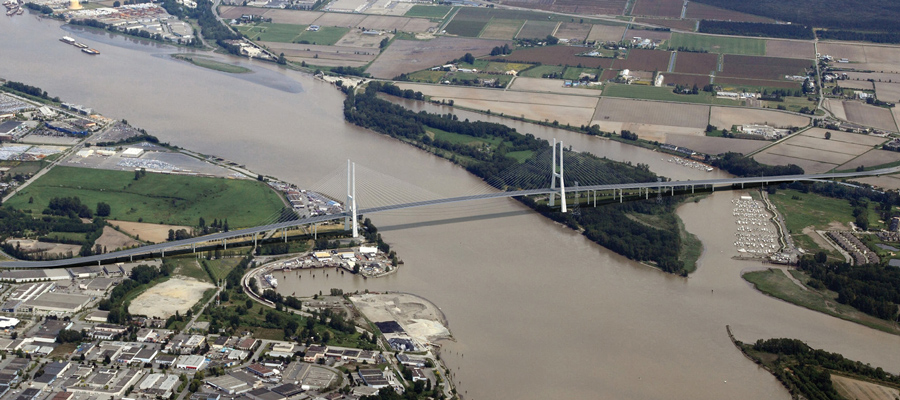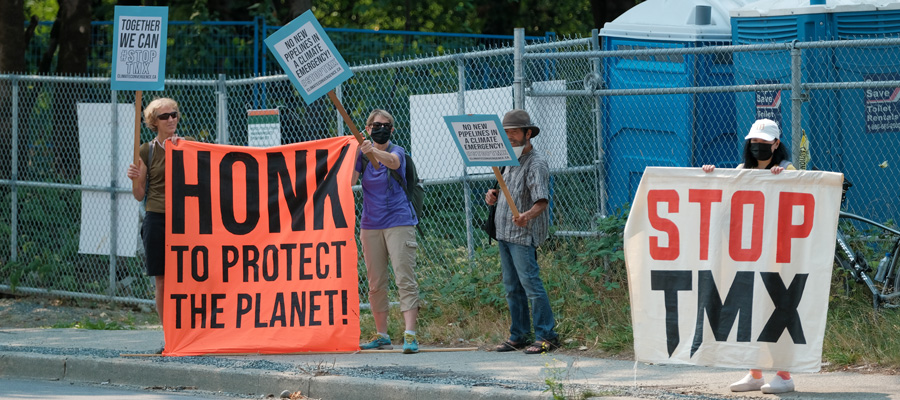Massey Bridge P3 borrowing costs yet another problem

As more information becomes available about the controversial $3.5-billion, 10-lane Massey Bridge project, concern about the project increases.
Issues had already been raised about the cost and need for the project given questions about traffic growth, but the publication of two new documents raises concerns about the plan to build the bridge as a public private partnership (P3).
Both the Business Case for the bridge and the Request for Proposals (RFP) issued to the three selected consortia were released earlier in October. The Business Case justifies the use of a P3 while the RFP stipulates how the P3 will be delivered with the private partner “responsible for arranging and delivering approximately $750 million of financing towards the funding of the Project”.
Issues had already been raised about the price and scope of the project. People have questioned projections about traffic growth in the next thirty years noting that driving miles peaked in North America in 2007. Rising energy prices, denser neighbourhoods, transit, and the possibility of self-driving cars may all lead to decreased traffic volumes. BC’s Auditor General, Carol Bellringer, has also said she intends to evaluate the quality of evidence to support the decision to replace the Massey Tunnel.
Issues had already been raised about the price and scope of the project. People have questioned projections about traffic growth in the next thirty years; rising energy prices; denser neighbourhoods; transit; and the possibility of self-driving cars.
Earlier reports from the Auditor General also raise questions about the cost of P3s. In her 2013-14 report on the provincial government’s financial statements she noted:
“As well, it is interesting to note that while government’s weighted average cost of borrowing is approximately 4%, on the $2.3 billion that government borrowed through public private partnerships this is 7.5%.”
The Auditor General’s report suggests the government will be paying roughly 3.5 per cent more to have the private partner provide this funding than it would if the money was borrowed publicly. Over the 25-year operating period this would come to an additional cost of more than $250 million.
The government plans to repay $150 million of the money raised privately through the P3 partnership at the end of construction. This is similar to what was done on the construction of the Evergreen Line transit project where the private partner provided financing during construction as a way to guarantee its work. With the Massey project, however, the government is still asking for an additional $600 million that will be paid back over the remaining 25 years of the Design/Build/Operate/Partially Finance P3.
As well as the government paying a higher interest rate to use private sector money there are several other things in the RFP to make a potential private sector partner happy. The operation and maintenance portion of the contract over the 25 years of operation is assumed to be increased by the cost of living. This might not sound too surprising except for the fact the provincial government routinely gives its own employees increases considerably less than the cost of living. Advantage private sector partner.
The private sector partner also doesn’t need to worry about the cost of borrowing going up during the negotiation process. The RFP stipulates that the government “is willing to provide interest rate movement certainty to Proponents from the Financial Submittal to the Effective Date if certain conditions are met”.
All of these issues might raise questions as to whether a P3 is in the public interest and not surprisingly, the government’s business case declares that it is. The government calculates that using the P3 will save $95 million, or a saving of 3.9% over doing the project publicly. It arrives at this assumed saving through a set of assumptions that make public delivery of a project of this size almost impossible.
As well as the government paying a higher interest rate to use private sector money there are several other things in the RFP to make a potential private sector partner happy.
There is evidence in the government’s project Business Case that it expects the cost to use private financing to be very close to the 7.5 per cent figure cited by the Auditor General. The Business Case states that the Discount Rate used for the project will be 7.4 per cent. The use of the discount rate is complex, but the 7.4 per cent figure is based on the project’s “inherent risks”. It is also based on the rate at which a project breaks even according to the Harvard Business Review. Since the private partner needs to make 7.4 per cent on its money, that is likely to be the cost of using private capital.
The discount rate is used to discount the value of future spending. The cost of living is an example. With 2 per cent inflation a dollar today would be worth 98 cents next year. But with a 7.4 per cent discount rate, a dollar today would be worth 92.6 cents next year. In 10 years it would be worth 50 cents and in 25 years at that discount rate it would be worth only 17 cents.
Why is this important? Another assumption in the methodology is that if a project is done publicly “all construction costs are assumed to be paid by the Province as they are incurred with no financing assumptions included”. In other words, it is assumed that under public delivery, all construction costs are paid in the first few years before discounting makes the value of the spending disappear. Another assumption is that the government would not borrow the money to pay for the project.
But with a P3, the private sector money is assumed to be paid back over the life of the project. That means in the final year, the value of debt paid back is assumed to be worth about 17 cents on the dollar. If public spending on construction were accounted for the same way as private investment dollars, the advantage to the P3 would disappear like smoke. These assumptions basically rig the system in favour of P3s.
There are other assumptions as well. The Business Case assumes a private partner will pay federal and provincial taxes but a public project will not.
But here’s the thing. The bridge would be built by a private company, no matter whether it is publicly managed or a P3. And presumably the builder would pay taxes. Second, just how much would be declared as income is an open question. Projects such as this are increasingly finding their homes in tax havens. Profits are declared in the tax haven, not where the work is done. We have already seen this happening in BC with some P3 projects.
Partnerships BC, the government’s privatization agency, has a methodology that ensures it will be a public private partnership.
What is the effect of this on the assumptions about tax revenue? It appears the government has little interest in knowing. In response to the Freedom of Information request on the issue they responded:
“Although a thorough search was conducted, no responsive records were located. Your file is now closed.”
Beyond this, there are other potential issues. At least one member of a consortium—SNC-Lavalin—a favourite of the provincial government, has been suspended from receiving World Bank financing for projects because of corruption. SNC-Lavalin is also involved in a court case over its work with the Evergreen Line. Then there are transparency issues. P3s tend to be riddled with secrecy as MLA Vicki Huntington found out when she went looking for information about the Massey Bridge.
There are many questions about the Massey Bridge project but a couple of things are certain. Partnerships BC, the government’s privatization agency, has a methodology that ensures it will be a public private partnership. And higher interest rates on money provided by the private partner will cost British Columbians hundreds of millions of dollars more over the life of the contract.
If the assumptions about rapidly expanding traffic and tolls are also wrong, as they have proved to be on the Golden Ears Bridge P3, things could be even worse. And our grandchildren will pay for it.
Topics: Economy, Municipalities, Privatization, P3s & public services, Provincial budget & finance, Transparency & accountability


